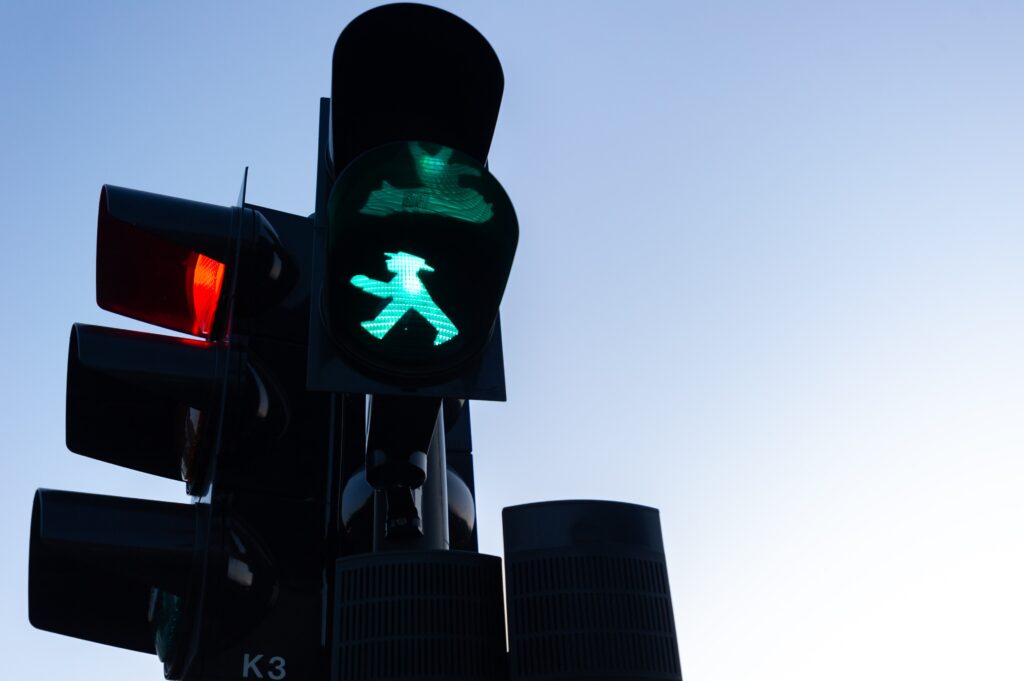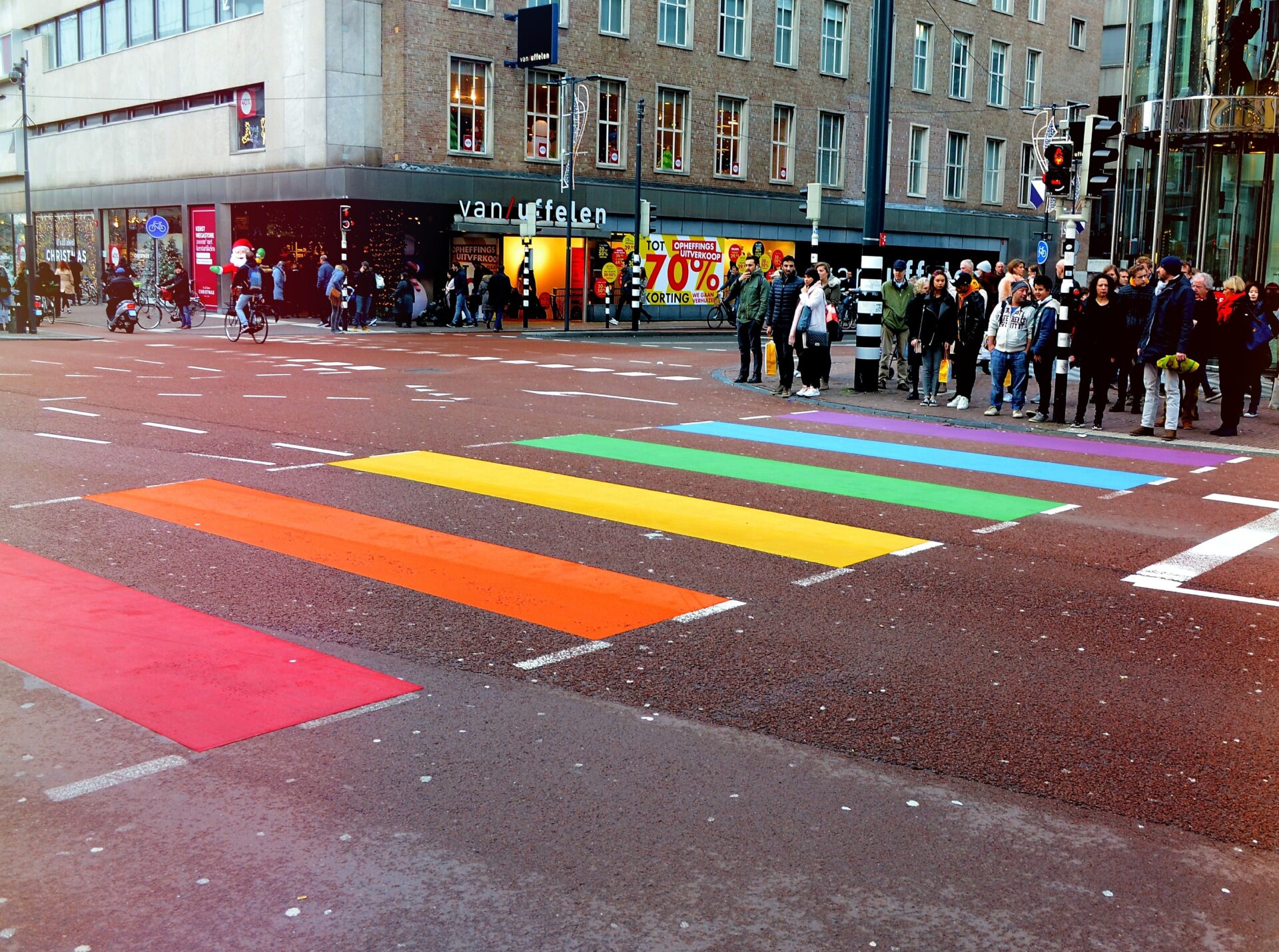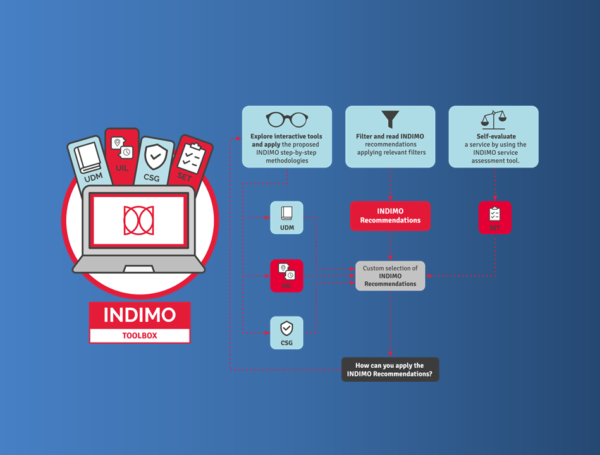by Kaatje BOURY, Elin COSEMANS and Thomas MEESTER – IMEC with the support of Wim VANOBBERGHEN, Senior Researcher, imec/VUB
Within the INDIMO project the Antwerp pilot is developing inclusive smart traffic lights. We’re all very familiar with the red-green pedestrian traffic lights that help us safely cross a street. But what if they could be more smarter and fit vulnerable users’ needs? Governments and cities try their best to adapt to this basic need for a safe crossing by for example, adding acoustic sounds for inattentive or visually limited people. Current advances in digital technology allow us to bring this seemingly simple infrastructure to a next level: connected, responsive and able to anticipate.

In the Antwerp project, we examine exactly this opportunity: how can a smart traffic light improve the safety of a crossing? Is it desirable? How can a crossing become more accessible for those that tend to avoid them? Can we design a digital solution that allows a traffic light to anticipate to a person’s specific need, while at the same time ensuring good traffic circulation? A smart traffic light should be able to adapt the traffic light’s phases to the personal needs and desires for each target group. In order to do this, the traffic light should be able to identify a person’s need, for example by categorizing them into different segments. Depending on their needs, the traffic light can provide them with more time to cross the intersection, give them additional feedback such as an acoustic signal and/or give them extra information about for instances the conditions of the intersection. This allows the smart traffic light to personalize the crossing based on the specific need of the pedestrian.

Let’s do some field-work: end users needs emerged during the interviews
At the start of the project, we detected 3 target groups that currently struggle to cross an intersection: elderly, people with reduced vision and people with reduced mobility. In close alignment with the city of Antwerp, our goal is to develop a smart traffic light that can address the needs of these groups.
In order to better understand the needs of all groups, we talked to several people belonging to these target groups as well as organisations that represent them or defend their interest. Via in-depth interviews we wanted to understand their modus operandi right now: how do they cross an intersection? What tools and digital applications do they use when they are moving around in the city? Which problems occur when crossing or engaging in mobility? What are their needs and what are their wishes towards a potential solution?
The insights are still being written today, but it is already clear that it takes more than a good traffic light to get on the road: the state of the road itself and provided infrastructure are one of the main issues people suffer with and quite quickly leads to avoidance behaviour. It should not only be surprising to us, but also to policy makers that (pedestrian) mobility can often not be viewed as an isolated topic. Nonetheless, getting more time to cross at an intersection is a welcomed feature, combine this with priority for pedestrians (over bikers and cars) and such a functionality in a smart traffic light could increase (perceived) safety for a large group.
On-demand green-light
Another important issue occurring in all groups was related to on-demand green. This on-demand request for green light was deemed troublesome, since some our respondents annotated that they were unaware of it or unable to reach it. Third insight is that pedestrian mobility in our target groups is weather dependent: cold and rain can lead to postponing a trip.
As we speak, the Antwerp pilot team is collecting all insights to decide on a concept that can address these needs and whether every target group has a similar need. One of the main challenges for our future solution will be to decide how we can register an individual’s need and communicate that to the smart traffic light. In order to better scope the ideal solution addressing their needs, we proposed them different technologies: an application, an artefact (e.g., a badge or a keychain), cameras. Mobile applications were preferred by some but could pose some serious barriers, keychains could increase stigma, while cameras could present us with privacy issues.
Quote 1 “Our solution should be able to register a request and communicate that to the smart traffic light so that we can instruct that light to act differently from its normal sequence.” – Thomas De Meester, application prototyping engineer at imec.
Over the course of this project, we have, and will further, deep-dive together with different stakeholders in so called Community of Practices, to discuss the outcomes, best practices, barriers, solution and next steps. The community serves as our pilot’s sounding board by contributing their expertise in mobility, accessibility and knowledge of the target groups.
Follow this discussion in the COP area hosted on the




